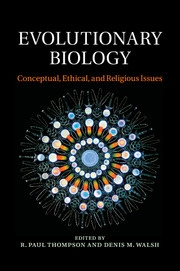Book contents
Chapter 1 - Human evolution
Whence and whither?
Published online by Cambridge University Press: 05 March 2014
Summary
- Type
- Chapter
- Information
- Evolutionary BiologyConceptual, Ethical, and Religious Issues, pp. 13 - 28Publisher: Cambridge University PressPrint publication year: 2014



